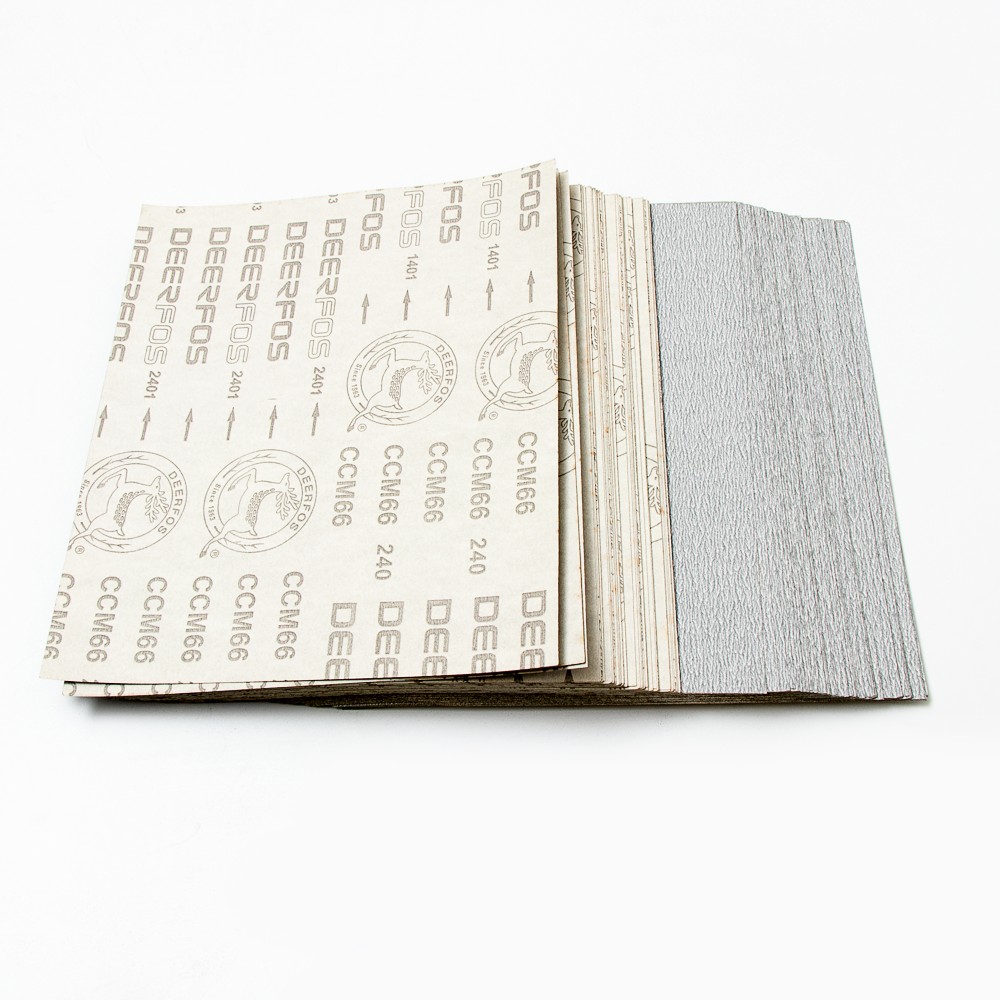Einführung
Sandpaper is an essential tool in various industries and DIY projects, enabling the smoothening, shaping, and finishing of surfaces. Traditionally, sandpaper consisted of abrasive grains adhered to paper, cloth, or other materials. However, with advancements in technology, electric coated abrasive sandpaper has emerged as a superior alternative, offering numerous benefits over traditional sandpaper. This article explores the differences, advantages, and applications of electric coated abrasive sandpaper compared to traditional sandpaper, highlighting why the former is becoming increasingly popular among professionals and hobbyists alike.
Traditional Sandpaper: An Overview
Traditional sandpaper has been used for centuries and consists of abrasive grains, such as aluminum oxide, silicon carbide, or garnet, glued to a backing material like paper or cloth. The backing material’s flexibility and strength determine the sandpaper’s durability and ease of use. Traditional sandpaper is available in various grits, from coarse to fine, to cater to different applications.
Types of Traditional Sandpaper
- Aluminium-Oxid-Schleifpapier: Known for its durability and versatility, it is suitable for sanding wood, metal, and plastic.
- Siliziumkarbid-Schleifpapier: Ideal for sanding hard materials like glass, stone, and ceramics, it offers a sharper cut and longer lifespan.
- Granat-Schleifpapier: A natural abrasive, garnet is softer and provides a smoother finish, making it ideal for woodworking and finishing applications.
Applications of Traditional Sandpaper
Traditional sandpaper is widely used in woodworking, metalworking, automotive refinishing, and home improvement projects. It is ideal for tasks such as removing paint, varnish, or rust, smoothing rough surfaces, and preparing surfaces for painting or staining.
Electric Coated Abrasive Sandpaper: An Overview
Electric coated abrasive sandpaper represents a significant advancement in sanding technology. It involves the application of abrasive grains onto a backing material using an electric charge, resulting in a more uniform and consistent coating. This process enhances the sandpaper’s performance, durability, and efficiency.
Advantages of Electric Coated Abrasive Sandpaper
- Consistency and Uniformity: The electric coating process ensures a more uniform distribution of abrasive grains, providing consistent performance and a smoother finish.
- Verbesserte Langlebigkeit: Electric coated sandpaper has a longer lifespan compared to traditional sandpaper, as the grains are more securely bonded to the backing material.
- Improved Efficiency: The consistent abrasive surface allows for faster material removal and reduced clogging, increasing sanding efficiency and productivity.
- Vielseitigkeit: Electric coated sandpaper is available in a wide range of grits and is suitable for various materials, including wood, metal, plastic, and composites.
- Reduzierter Wärmestau: The electric coating process often results in a more open coat, which helps dissipate heat and reduces the risk of burning or damaging the workpiece.
Comparative Analysis: Electric Coated Abrasive Sandpaper vs. Traditional Sandpaper
Performance and Efficiency
Electric coated abrasive sandpaper outperforms traditional sandpaper in terms of consistency, durability, and efficiency. The uniform coating of abrasive grains ensures a smoother and more even finish, while the enhanced durability allows for longer use without the need for frequent replacement. Additionally, the improved efficiency of electric coated sandpaper reduces the time and effort required for sanding tasks, making it a preferred choice for professionals and DIY enthusiasts.
Material Compatibility
Both traditional and electric coated sandpaper are available in various grits and abrasive materials, making them suitable for different applications. However, electric coated sandpaper offers superior performance across a broader range of materials, including wood, metal, plastic, and composites. Its versatility makes it an ideal choice for multi-material projects and industries that require precise and efficient sanding.
Cost Considerations
While electric coated abrasive sandpaper may have a higher initial cost compared to traditional sandpaper, its longer lifespan and improved efficiency result in cost savings over time. The reduced need for frequent replacement and the increased productivity make electric coated sandpaper a more economical choice for long-term use.
Auswirkungen auf die Umwelt
The manufacturing process of electric coated abrasive sandpaper is often more environmentally friendly compared to traditional sandpaper. The electric coating process reduces waste and ensures a more efficient use of raw materials. Additionally, the longer lifespan of electric coated sandpaper reduces the overall consumption of sanding materials, contributing to a lower environmental impact.

Applications and Industries
Holzbearbeitung
In woodworking, both traditional and electric coated sandpaper are used for tasks such as surface preparation, smoothing rough edges, and finishing. However, electric coated sandpaper offers superior performance and efficiency, making it the preferred choice for professional woodworkers and furniture makers.
Metallbearbeitung
Metalworking requires abrasives that can handle hard materials and provide a precise finish. Electric coated abrasive sandpaper excels in this regard, offering consistent performance and reduced heat buildup, which is crucial for preventing damage to metal surfaces.
Autoreparaturlackierung
In the automotive industry, sanding is a critical step in preparing surfaces for painting and finishing. Electric coated sandpaper’s improved efficiency and uniformity make it an ideal choice for automotive refinishing, ensuring a smooth and flawless finish.
Home Improvement
For DIY enthusiasts and home improvement projects, electric coated sandpaper provides a versatile and efficient solution for various sanding tasks. Its durability and ease of use make it suitable for tasks ranging from paint removal to surface preparation.
Tips for Choosing the Right Sandpaper
Determine the Material
Consider the material you will be sanding and choose the appropriate abrasive material. Aluminum oxide is versatile and suitable for most materials, while silicon carbide is ideal for hard materials like glass and stone.
Select the Grit
Choose the appropriate grit based on the task at hand. Coarse grits (40-60) are ideal for heavy material removal, while medium grits (80-120) are suitable for smooth surfaces. Fine grits (150-220) are used for finishing and preparing surfaces for painting or staining.
Consider the Backing Material
The backing material’s flexibility and strength affect the sandpaper’s performance and durability. Cloth-backed sandpaper is more durable and suitable for heavy-duty tasks, while paper-backed sandpaper is more flexible and ideal for detailed work.
Evaluate the Cost and Lifespan
While electric coated abrasive sandpaper may have a higher initial cost, its longer lifespan and improved efficiency result in cost savings over time. Consider the overall cost and benefits when choosing between traditional and electric coated sandpaper.
Abschluss
Electric coated abrasive sandpaper offers numerous advantages over traditional sandpaper, including improved consistency, durability, efficiency, and versatility. While traditional sandpaper remains a reliable choice for various applications, electric coated sandpaper’s superior performance makes it an increasingly popular option among professionals and DIY enthusiasts. By understanding the differences and benefits of each type of sandpaper, you can make an informed decision and choose the right abrasive for your specific needs, ensuring optimal results and enhanced productivity in your sanding tasks.
Verwandte Produkte








